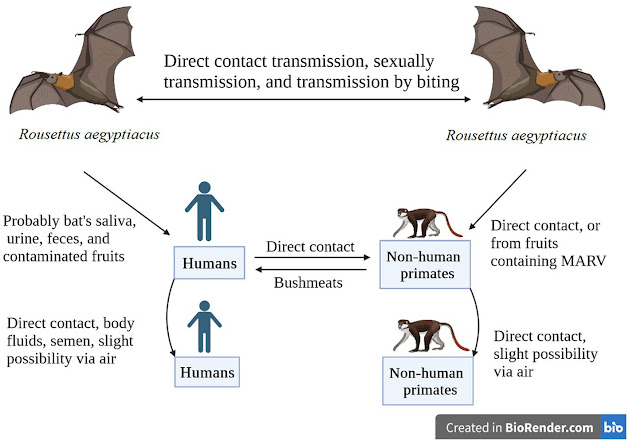The Challenge of Marburg Virus Disease in Africa: A Persistent Threat
 |
| ⓒfrom frontiersin |
Since its discovery in the 1960s, Marburg virus disease has posed a serious health challenge in Africa. This rare but deadly virus belongs to the same family as Ebola virus and is believed to originate from bats. It can cause severe illness in humans, with symptoms ranging from fever, chills, and headache to severe bleeding and organ failure.
Outbreaks of Marburg virus disease have occurred sporadically in several African countries, often in regions where people come into contact with bats or caves inhabited by bats. The virus can spread through direct contact with infected bodily fluids or tissues, making healthcare workers and family members of patients particularly vulnerable.
The signs of Marburg virus disease typically appear abruptly and progress rapidly. Early symptoms resemble those of influenza, such as fever, muscle pain, and fatigue. As the disease advances, it can lead to more severe symptoms including nausea, vomiting, diarrhea, and hemorrhagic manifestations like bleeding from the gums, nose, and other organs.
Preventing Marburg virus disease involves several key measures. First and foremost is raising awareness about the virus and educating communities on how it spreads. Avoiding contact with bats and their habitats, as well as avoiding consumption of bushmeat from wild animals, reduces the risk of exposure. In healthcare settings, implementing strict infection control measures—such as wearing personal protective equipment and safely handling medical waste—is crucial to preventing transmission among healthcare workers and patients.
Efforts to develop a vaccine for Marburg virus disease are ongoing, although none has been widely available for public use as of 2024. During outbreaks, rapid identification of cases, isolation of patients, and contact tracing are essential to containing the spread of the virus. International organizations and local health authorities collaborate to respond swiftly to outbreaks, providing medical care and support to affected communities.
In conclusion, Marburg virus disease remains a challenging public health issue in Africa, requiring ongoing vigilance and coordinated efforts to prevent and control outbreaks. By continuing to invest in research, public health infrastructure, and community education, countries can reduce the impact of this deadly virus and protect the health of their populations.




No comments:
Post a Comment